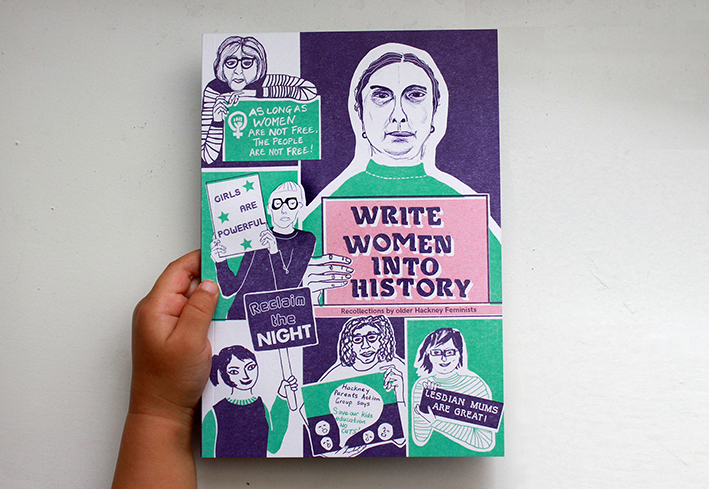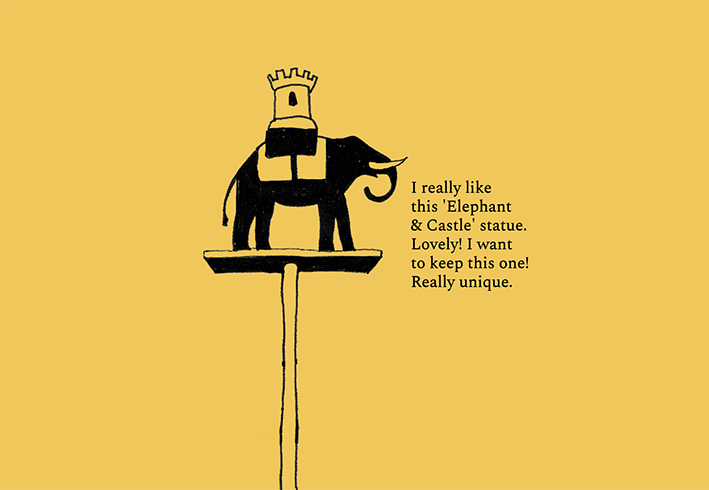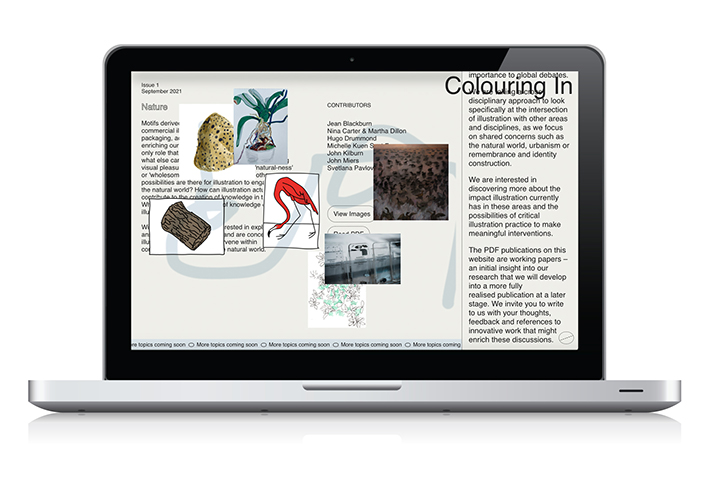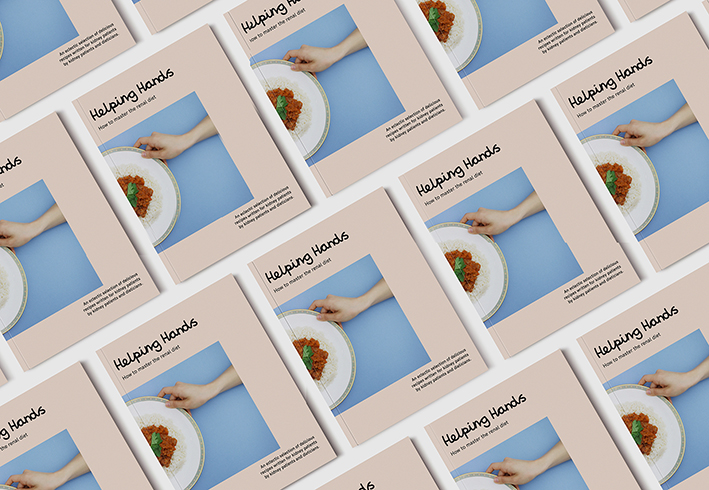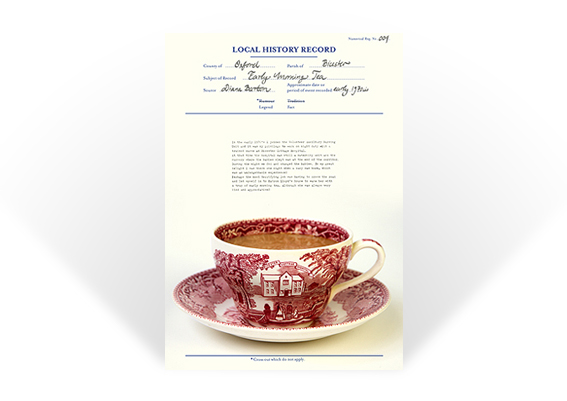
︎What’s on my desk? (Nov 2021)
︎︎︎ scroll down for desk archive
︎︎︎ scroll down for desk archive
a.
Tim Ingold (2016 [2007]) Lines, London: Routledge
‘But as the certainties of modernity give way to doubt and confusion, lines that once went straight to the point have become fragmented, and the task of life is once more to find a way through the cracks.’ (2016:4)
b.
Cracks in the Pavement, walkers’ register, Map 4, to see more click ︎︎︎HERE
Tim Ingold (2016 [2007]) Lines, London: Routledge
‘But as the certainties of modernity give way to doubt and confusion, lines that once went straight to the point have become fragmented, and the task of life is once more to find a way through the cracks.’ (2016:4)
b.
Cracks in the Pavement, walkers’ register, Map 4, to see more click ︎︎︎HERE
c.
Edmund Leach (1976) “An Anthropologist’s Reflection of a Social Survey”, quoted in Cerwonka & Malkki (2007) Improvising Theory, Chicago: University of Chicago Press
‘ [...] a social field does not consist of units of populations but of persons in relation to one another.’ (2007:169)
d.
Write Women into History, Hackney HOWLers Writing Group, to see more click ︎︎︎HERE
Edmund Leach (1976) “An Anthropologist’s Reflection of a Social Survey”, quoted in Cerwonka & Malkki (2007) Improvising Theory, Chicago: University of Chicago Press
‘ [...] a social field does not consist of units of populations but of persons in relation to one another.’ (2007:169)
d.
Write Women into History, Hackney HOWLers Writing Group, to see more click ︎︎︎HERE

Desk archive #5 / December 2020
(items photographed on the floor as desk continues to be messy)
Cracks in the Pavement, project launch. Or should it be ‘Cracks in the Floorboards’? (Update May 2021: Turns out these floorboards are full of woodworm, another form of world-making.)

Desk archive #4 / August 2020
(items photographed on the floor due to unmanageably messy desk)
a.
W J T Mitchell (1994), Picture Theory, Chicago and London: University of Chicago Press
'I use "representation" as the master-term for this field, not because I believe in any general, homogenous, or abstractable concept of representation, but because it has a long tradition in the critique of culture, and it activates a set of linkages between political, semiotic/aesthetic, and even economic notions of "standing or acting for."' (1994:6)
b.
Regimes of representation, sketch 1 – botany
Painting the weeds on my street in watercolour. This takes a lot of time. What grows in the cracks?
c.
Regimes of representation, sketch 2 – architecture
A disembodied fantasy. No visible cracks.
d.
Anna Lowenhaupt Tsing (2015), The Mushroom at the End of the World, Princeton and Oxford: Princeton University Press
'I first met Xiaomei when she was nine.[...] The next time I came, two years later, [...] she dragged me to see the vegetable gardens along the road, and then further into the uncultivated verges, where the wild plants of disturbed places grow. This was the latent common of weeds, the "vacant places" of progress narratives, so often imagined as without value.' (2015:282)
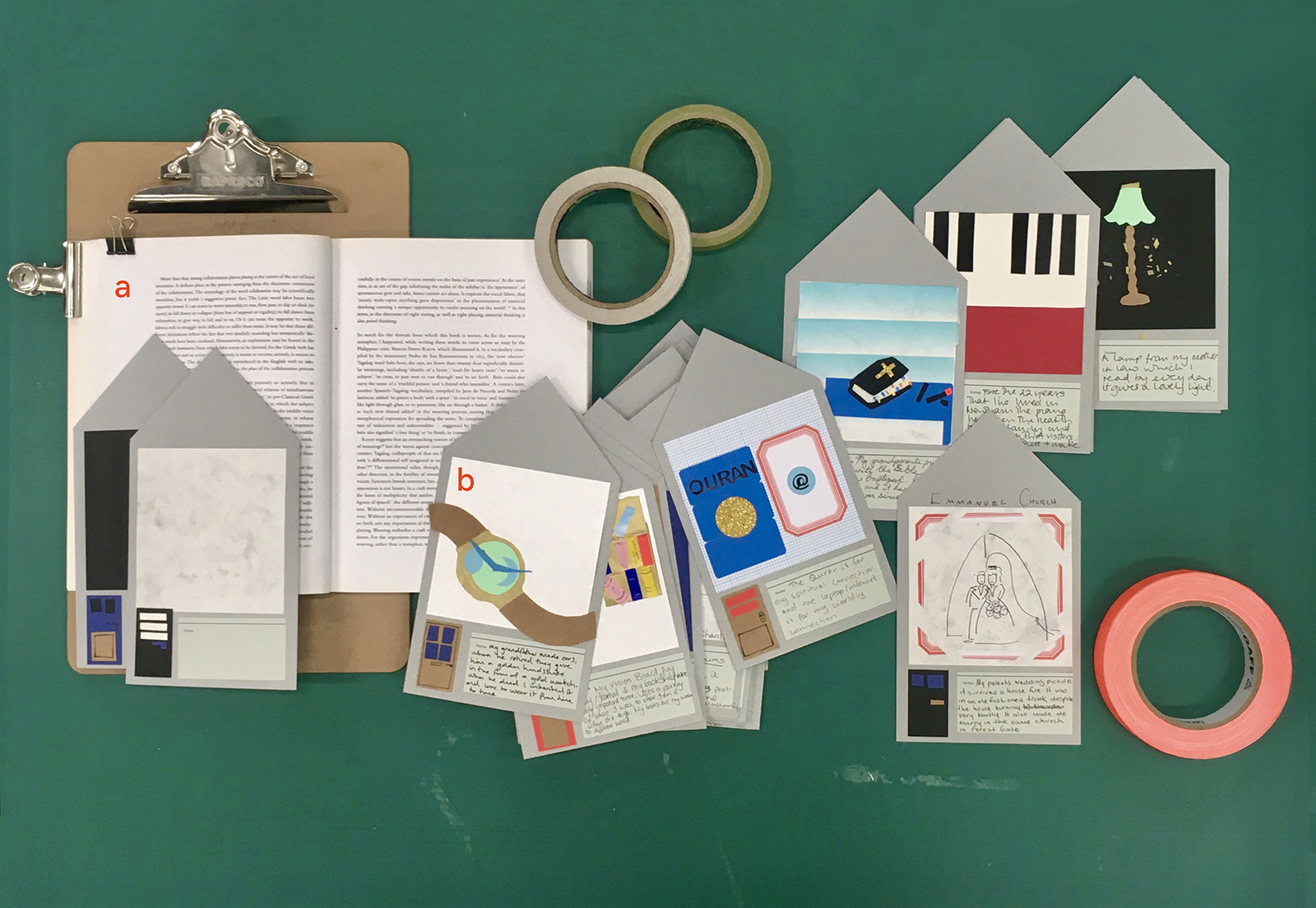
Desk archive #3 / Februar 2020
a.
Paul Carter (2004), Material Thinking, Melbourne: Melbourne University Press
'Creative research – respecting the materiality of thought – its localisation in the act of invention – [...] studies complexity and defends complex systems of communication against over-simplification. It explores the irreducible heterogeneity of cultural identity, the always unfinished process of making and remaking ourselves through our symbolic forms.' (2004:13)
b.
What is the most precious item in your house?
Results from a workshop in Newham library in preparation for Newham Heritage Month 2020.
WATCH: My grandfather made cars, when he retired they gave him a golden handshake in the form of a golden watch. When he died, I inherited it and love to wear it from time to time.
QURAN: The Quran is for my spiritual connection and the laptop/internet for my worldly connection.
BIBLE: My grandparents presented me with this Bible when I was baptized. I study it often and it has been with me ever since.
PIANO: For the 22 years that I've lived in Newham the piano has been the hearth for my family and all the wealth of visitors: to play together and make music.
LAMP: A lamp from my mother-in-law which I read by every day. It gives a lovely light.
WEDDING: My parents' wedding picture. It survived a house fire. It was in an old-fashioned trunk despite the house burning very badly. It also made me marry in the same church in Forest Gate.
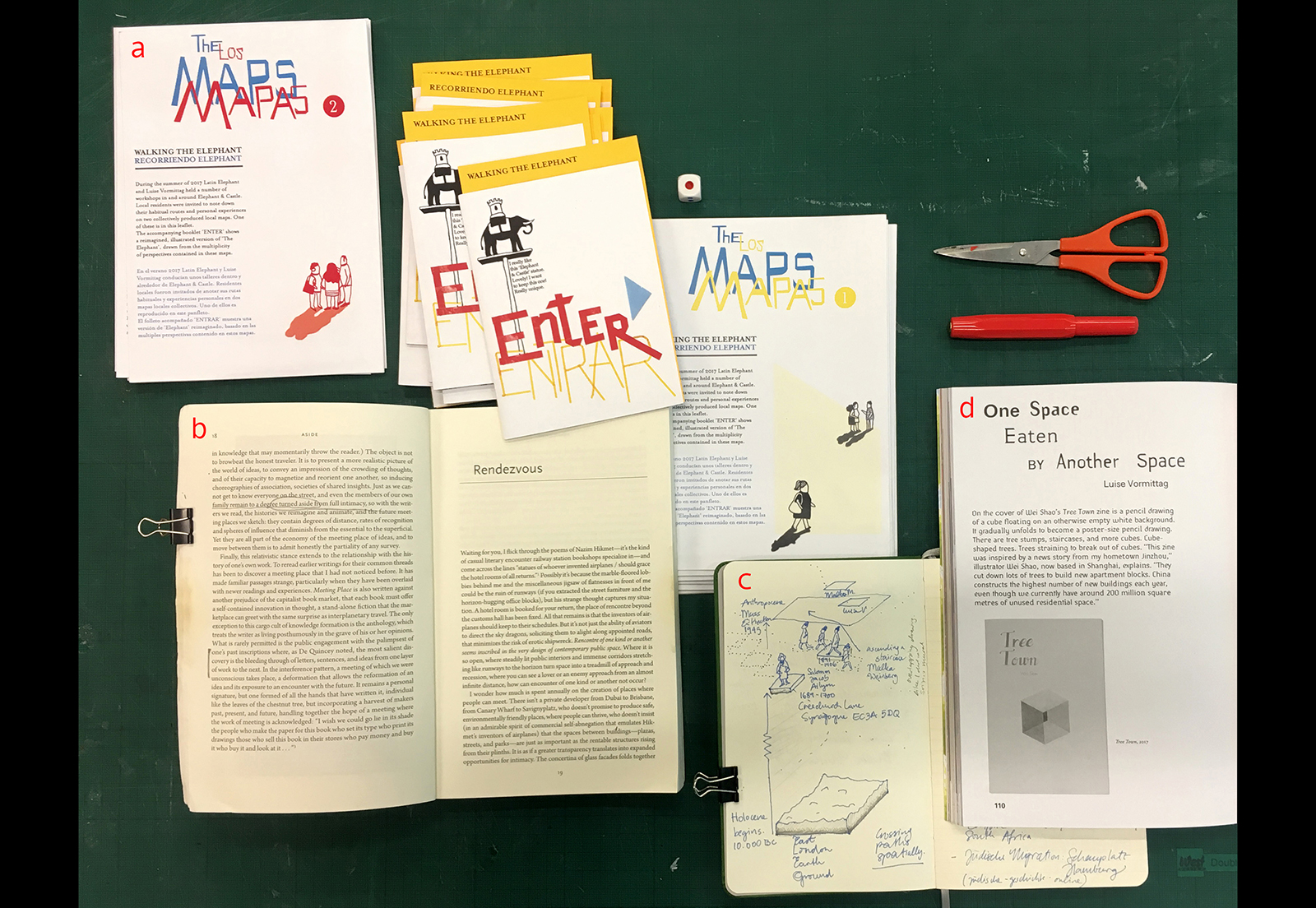
Desk archive #2 / November 2019
a.
Walking the Elephant / Recorriendo Elephant, with Latin Elephant, 2019
b.
Paul Carter (2013), Meeting Place: the human encounter and the challenge of coexistence, Minneapolis, MN & London: University of Minesota Press
c.
Ideas
d.
Luise Vormittag (2019) 'One Space Eaten by Another Space: the work of Wei Shao', Varoom, Issue 40, pp.110-121

Desk archive #1 / October 2016
a.
Design Museum (2015) Designers in Residence, feat. Hefin Jones
b.
Eastside Projects (date unknown) leaflet
c.
Mitchell, W.J.T. (Ed.) (2002) Landscape and Power, Chicago, IL & London: The University of Chicago Press
d.
Lang, P. & Menking, W. (Eds.) (2003) Superstudio: life without objects, Milan: Skira, pp.144–145
e.
Miller, M. (2013) A Showman’s Yard
f. Eastside Projects & Nencini, P. (2013) The Artist and the Engineer

